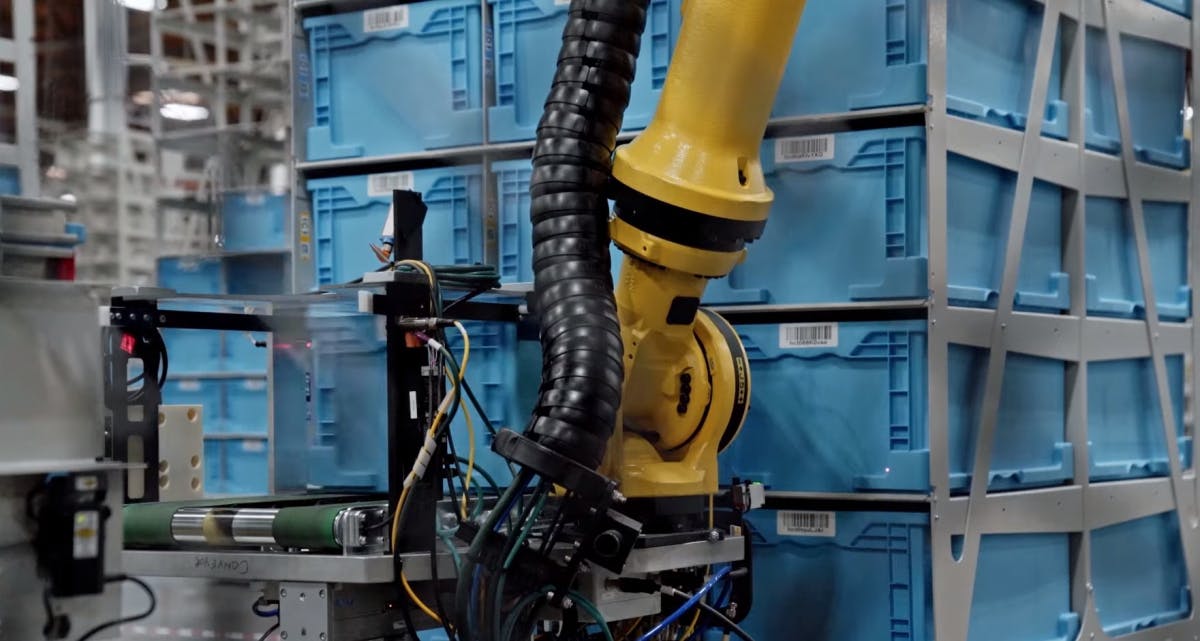Amazon is testing new auxiliary robots in shipping centers
Amazon is testing robots in its first logistics centers to support employees and help reduce accidents. They have names from Sesame Street, but are more likely to cause nightmares among trade unionists.
Online retailer Amazon has specified its plans for its logistics centers to use modern robots to simplify the work of human employees. Ernie and Bert, Scooter and Kermit are the names of the first robots that employees in the Amazon shipping centers will receive as “colleagues”. Just recently, Amazon announced that it wanted to reduce the number of reportable accidents by half by 2025 and thus make work safer.
The robots will initially be tested and optimized in the Robotics and Advanced Technology Labs near Seattle, Boston and northern Italy. The first approach is to optimize the transport of containers, trolleys and packages. Employees carry out the usual movements and work steps and motion capture technology analyzes and evaluates the movements and workflows. The motion capture software enables the data captured in a laboratory environment to be compared more precisely with industry standards and workflows to be improved. “Something as simple as changing the position of the handles on the containers can help to massively reduce the risk of injury to our employees,” explains Kevin Keck, global director for Advanced Technology at Amazon.
Contents
“Ernie” puts people in a better position
The robots that are currently being tested listen to names from Sesame Street: One of the new colleagues named Ernie removes containers from a robot shelf and uses a robot arm to bring them to the employee so that they can remain in a more comfortable and ergonomic position during order picking. According to Keck, this does not make the process faster, but it is less stressful for the employee because he does not have to bend down or stretch upwards. In addition to the quantitative data that is collected in the innovation laboratories, Amazon also hopes that employees will have individual experience here.
Bert, on the other hand, is one of Amazon’s first autonomous mobile robots (AMR). With Bert, robots no longer have to be confined to limited areas. This means that in the future, an employee could call Bert to move items through a facility. Also, at some point Bert may be able to move larger, heavier items or carts that are used to transport multiple packages. This is also intended to relieve employees without endangering them. Because AMR work without cages and limitations for the employee, as a cobot (collaborative robots). With the help of cameras, an AMR recognizes faster than human colleagues when the human employee is entering its area and, if necessary, evades or interrupts their own movement.
Two other AMRs that Amazon is currently developing are called Scooter and Kermit – they are supposed to transport trolleys and move empty transport trolleys. Finally, Kermit also collects empty boxes. Such less demanding work, which in the Industry 4.0 context in intralogistics has not been left to humans for a long time, robots can do well – simply because they do not require critical thinking skills and also reduce the physically strenuous work.
Autonomous mobile robots for more safety
The company plans to invest 300 million US dollars in security measures this year. For years, unions and employees have feared that robots, as helpful colleagues, could ensure that Amazon needs fewer human employees. On the one hand, that could actually be the case, although part of the truth is that Amazon is already not or only with difficulty in filling all the jobs in the shipping and logistics centers. In addition, the company recently announced that it intends to raise its own minimum wage in Germany to twelve euros from July 2021 and is planning another increase to 12.50 euros per hour for autumn 2022. This means that Amazon pays significantly more than the statutory minimum wage of 10.50 euros per hour, but it is still below the hourly wage for temporary workers of currently 12.35 euros, which is stipulated in the postal wage agreement.
In any case, Amazon assures that despite all robots there will be enough work (and increasingly less stupid work) in the logistics centers in the future and proves this with a number: Since Amazon started using robots in its systems in 2012, there have been more than one million jobs were created and 350,000 mobile drive robots would be used at the same time.
If Amazon uses robots for logistics support, there is no reason for labor lawyers to go to the barricades – because the Seattle-based company is still miles away (and may never get there) from a fully automated shipping process. On the contrary, employee representatives should only be happy if a company optimizes its workflows so that shipping employees can do the job for a long time without permanent damage or accidents. What you see in the videos is common practice in Industry 4.0, for example in the context of automation in many German companies, and has been used there for years, for example in order processing for individual productions and material replenishment.
Tobias Weidemann



